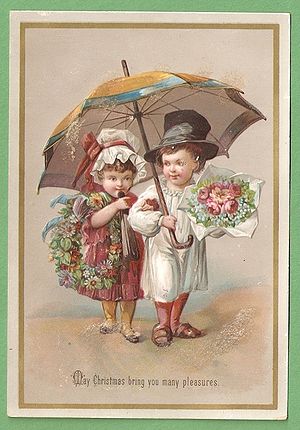It’s a simple thing really. It’s not even hard to do. And, we can still use this old-fashioned personalized marketing technique today.
In Victorian times, if you wanted to call on someone nearby you walked, took a carriage, or sent a servant (if you had one).
If the person lived far away, you had to rely on the mail, which could take weeks, even months.
Letters and cards were rare then, so they were treasured, and kept for years. We can still read them, hundreds of years later.
Is faster always better?
Now, we have email, text messages, social networks and lots of other ways to contact nearly anyone – instantly. Communication is fast, and largely disposable. We can delete emails, edit posts, plus, like, and forget about it.
But sometimes, the fastest way isn’t the best way.
A few days ago, I got a belated holiday card from a friend. I’d been about to toss all the cards, but kept them for a few days so I could enjoy them all.
Yesterday, my friend emailed asking if I’d gotten the card, and saying she was thinking of going entirely electronic next year.
Reach out and touch someone
It’s certainly faster (and cheaper) to send cards electronically, but they’re not as much fun. It’s marketing, sure, but it’s not really personalized marketing, especially if you’re sending the same message to hundreds or thousands of people.
When I get an e-card, I look at it, smile, and forget about it. The physical cards get propped up on a shelf where I can look at them, and smile throughout the entire holiday season. They make a much better impression than the electronic cards do.
A company that unexpectedly sends stickers, or a handwritten note, or a small gift will seem much more approachable and more “human.”
Have you tried this? Or has anyone sent you something you didn’t expect? An extra gift in your order? Or a handwritten note? What was it?




